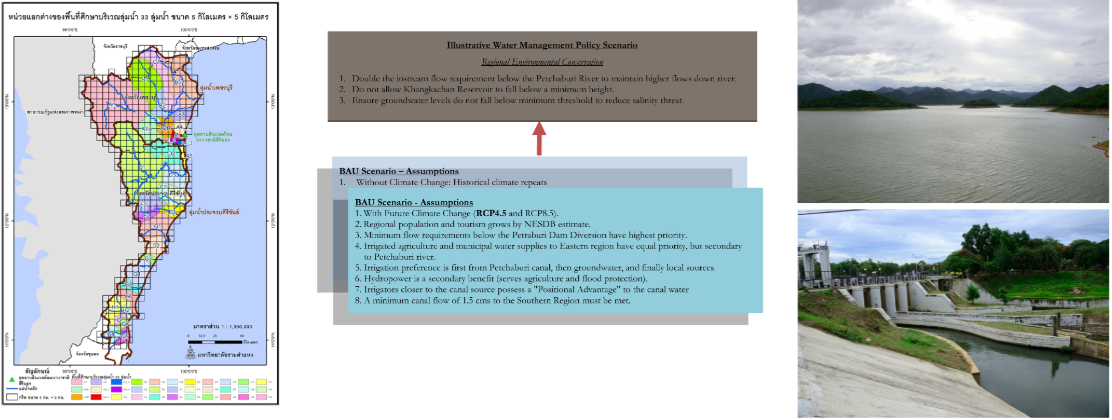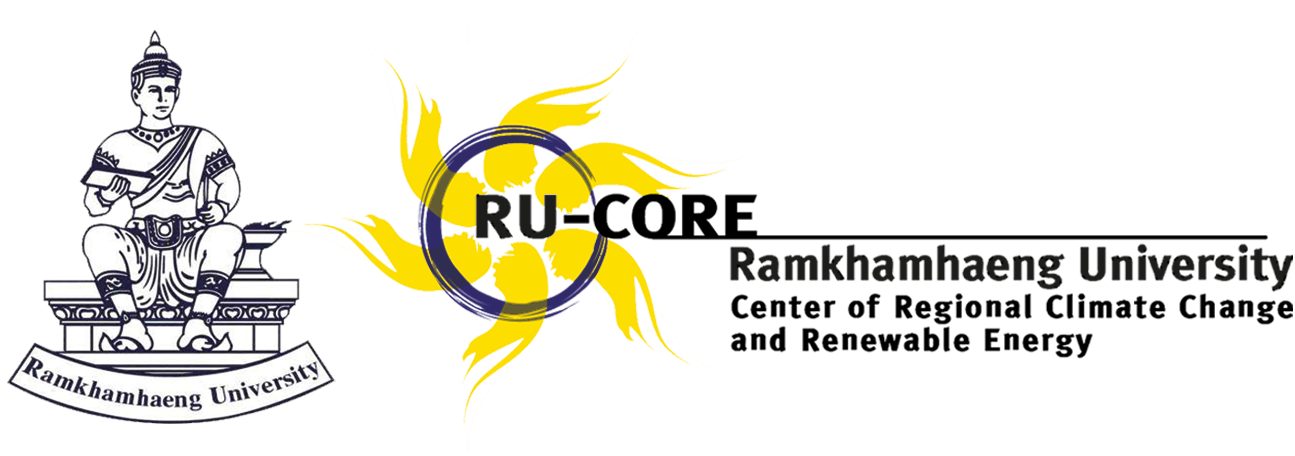

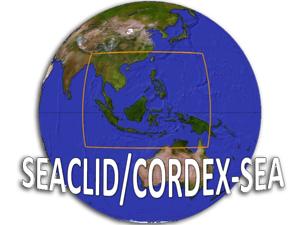




The calculated maximum critical loads for sulphur (CLmaxS) are in the range 546 – 4,552 eq.ha-1.yr-1. Approximately 75 % of the grids were allocated to higher than 2,000 eq.ha-1.yr-1 and only 2% that lower than 1,000 eq.ha-1.yr-1. The higher calculated CLmaxS values were found in the central and southern regions. In central region, higher CLmaxS values were influenced by BCw and ANCle(crit) of flood plain area with high percentage of clay content. In southern region, grid resolution with high CLmaxS were associated with high positive variables including BCw, BCdep and ANCle(crit). Areas with low CLmaxS were influenced by the high removed from forest soil.

The energy demand projection and greenhouse gases emissions from road transport are analyzed by using the bottom up end-used model. In 2040, the energy demand and greenhouse gases emission are projected to be in the range of 40,244 – 47,848 ktoe and 119 – 142 million tonne of CO2 equivalence respectively. Three types of greenhouse gas emissions mitigation measures included fuel economy improvement, fuel switching and mode shift are introduced. The measures have potential to mitigate accumulate greenhouse gases emissions in the range of 431 – 509 million tone of CO2 equivalence. The greenhouse gases abatement costs of all measures are estimated. The negative values of all abatement costs, except the electric truck, reflect that the measures have lower net present value with lower emissions. The prioritization of measures is also conducted by using the Analytic Hierarchy Process. The result shows the phasing off diesel to b5 diesel has the highest priority to be promoted into action.
Climate change information required for impact studies is of a much finer spatial scale than general circulation models can directly provide. Statistical downscaling models (SDMs) are commonly used to overcome this obstacle. For the assessment of Thailand’s future climate data under anthropogenically forced climate conditions correlation models are established for the 1965-1990 period between highly resolved Thai’s meteorological data and large-scale general circulation model output. Predictors output from GFDL-R30, forced with A2 and B2 scenario assumptions according to Special Report on Emission Scenario (SRES), are used to assess high resolution meteorological data in 2010-2029 and 2040-2059 periods. Eight surface predictands including average temperature, maximum temperature, minimum temperature, atmospheric pressure, precipitation, relative humidity wind speed and sunshine duration are modeled. The results show a diversification change of long-term average climate data for the whole Thailand area.
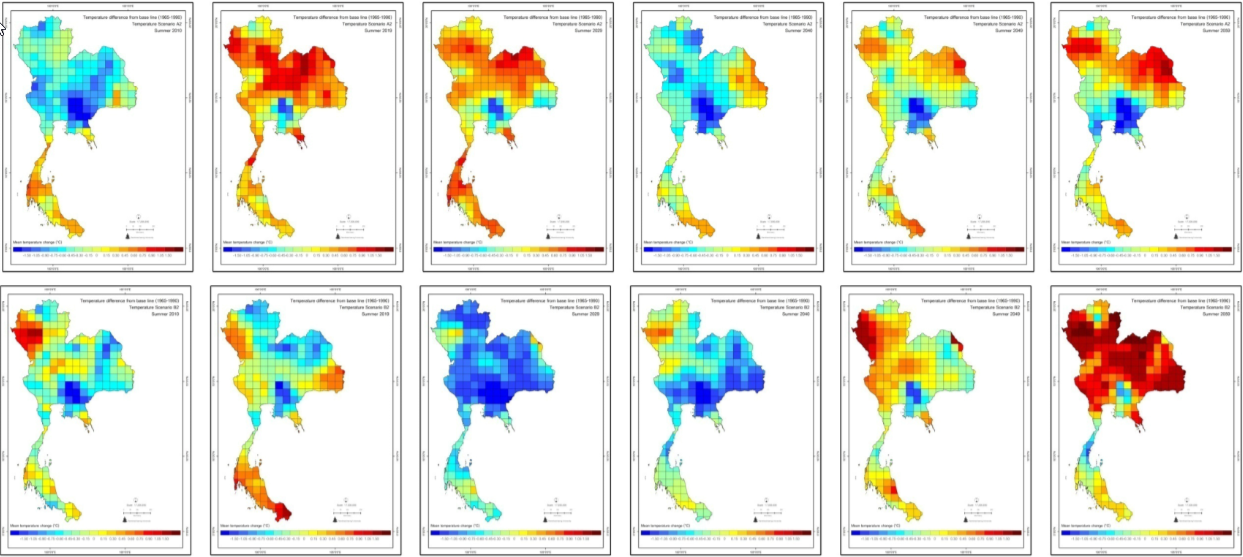
The assessment of the energy potential of 11 non-plantation biomass resources in Thailand were carried out. The maximum biomass surplus of 56,603 ktoe, compared can be used as energy supply for biomass combined heat and power (CHP) system in industrial sector. The projection of maximum CO2 mitigation potentail in the year 2012 – 2030 is as high as 1,300 million tonne.
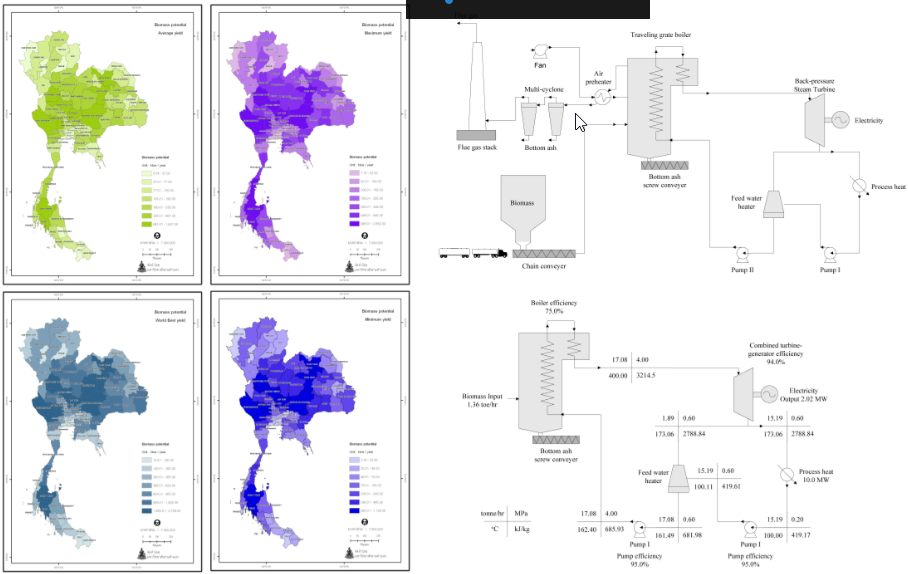
The assessment of alternative energy potential including solar, wind, municipal solid waste were carried out. The projection of maximum CO2 mitigation potentail in the year 2012 – 2030 is as high as 800 million tonne.
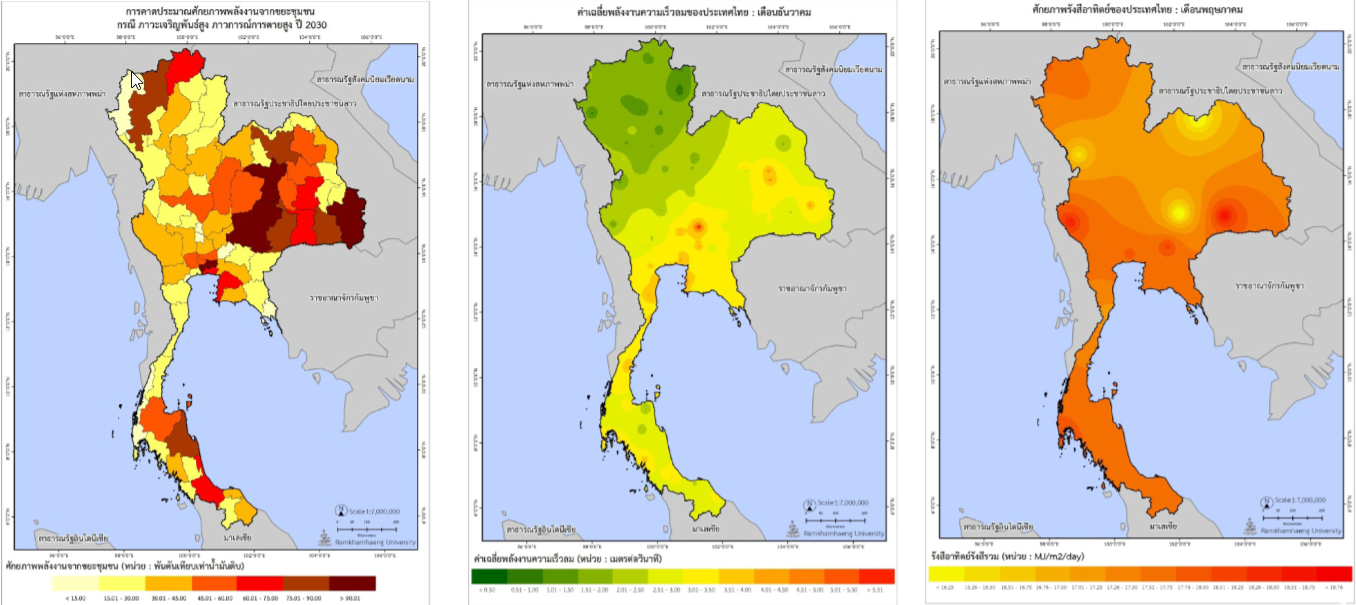
Two Representative Concentration Pathways, RCPs including RCP4.5 and RCP8.5 of two General Circulation Models, GCM-MPI-ESM-MR and GCM-EC-Earth, under the Coupled Model Inter-comparison Project phase 5, CMIP-5 are downscaled by using RegCM4 under the framework of SEACLID/CORDEX SEA project. The future climate projections from RCP8.5 under GCM-MPI-ESM-MR and GCM-EC-Earth in the year 2096 – 2099 show that the average temperature will increase from the base year by 3.7oC and 3.1oC respectively while the rainfall decrease by 2.0 mm per day and 1.3 mm per day respectively

Three RCPs including RCP4.5, RCP6.0 and RCP8.5 of GCM-GFDL-ESM2M, and GCM-HadGEM2-ES and two RCP including RCP4.5 and RCP8.5 of GCM-MPI-ESM-LR are downscaled by ANN. The future daily climate data set from the downscaling cover the period of 2006 – 2100 with the grid resolution of 10 km × 10 km. The projections of annual average daily mean, maximum and minimum temperate as well as precipitation show significant increasing trend. The rainfed rice production system was positive affected by all climate scenarios. Average rainfed rice yield was increased by 3 to 31 percent in 2090-2099 compared to the average yield from the base year of 2010 – 2019. On the other hand, irrigated rice production system was negative affected by these weather data sets. The average irrigated rice yield of Thailand was decreased by 2 to 30 percent in 2090 – 2099 compare to the yield from the base year of 2010 – 2019.
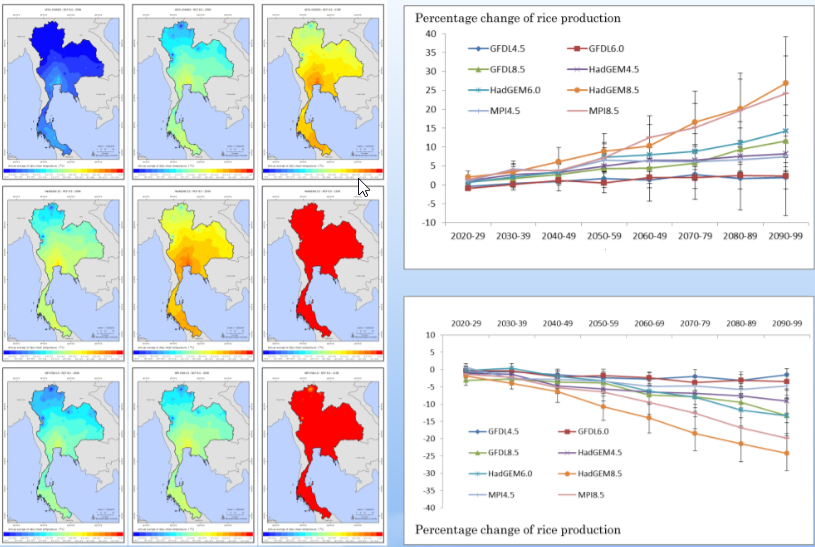
The future climate scenarios, RCP4.5 and RCP8.5 of the MPI-ESM-MR are downscaled to 25 km × 25 km grid resolution using regional climate model, RegCM4. The output form RegCM4 are further downscale to 5 km × 5 km grid resolution using Artificial Neural Network which is one method under the statistical downscaling approach. The future climate downscaled data are applied to the Water Evaluation and Planning Model to evaluate the impacts of climate change on water management in Pethchaburi and Prachuap Khiri Khan coast river basins. The future climate change from the downscaling processes reveals the increasing trend of mean temperature in both basins and declining trend of precipitation. The future climate change scenario shows warming and drying, but the water systems-including surface and groundwater storage- exhibited robustness and resilience to these climate trends, although the climate scenario exhibited an increase in precipitation towards the end of the 20 year period, and the surface and groundwater storages recovered.
